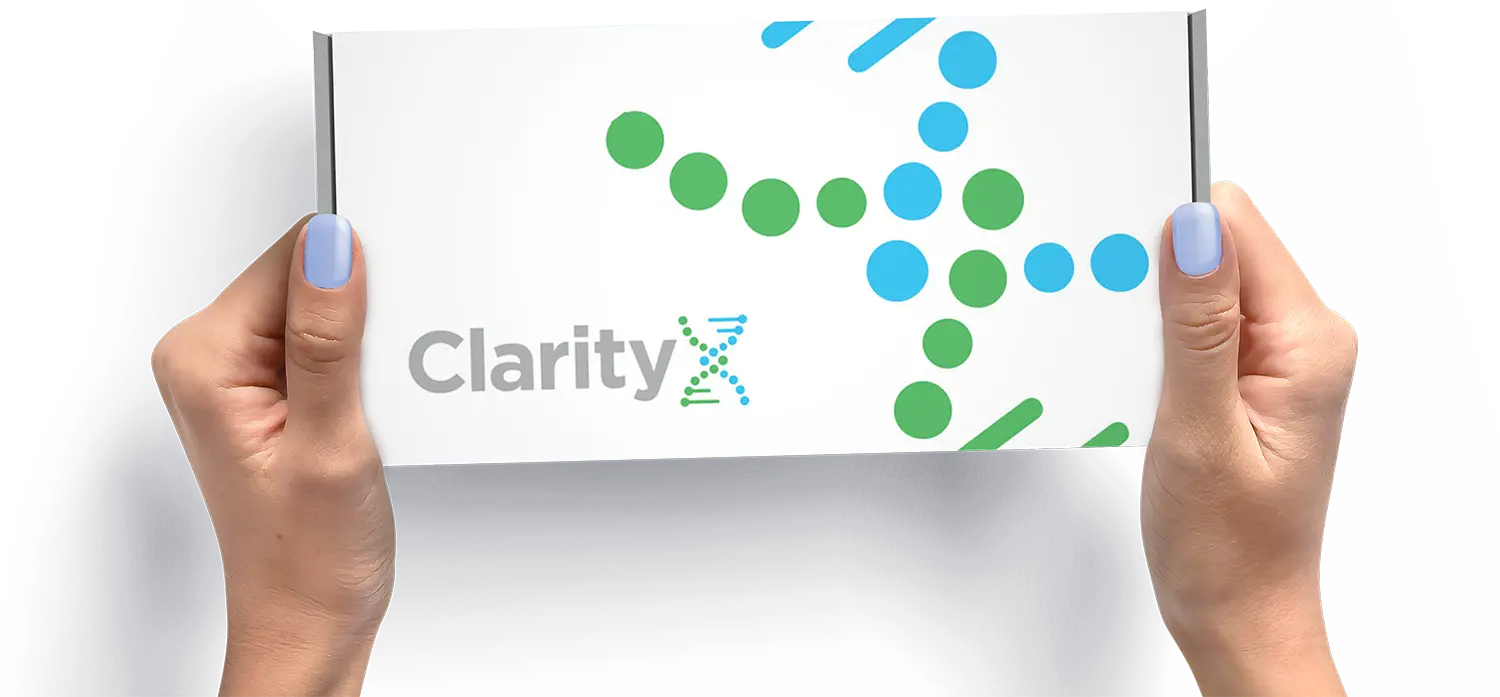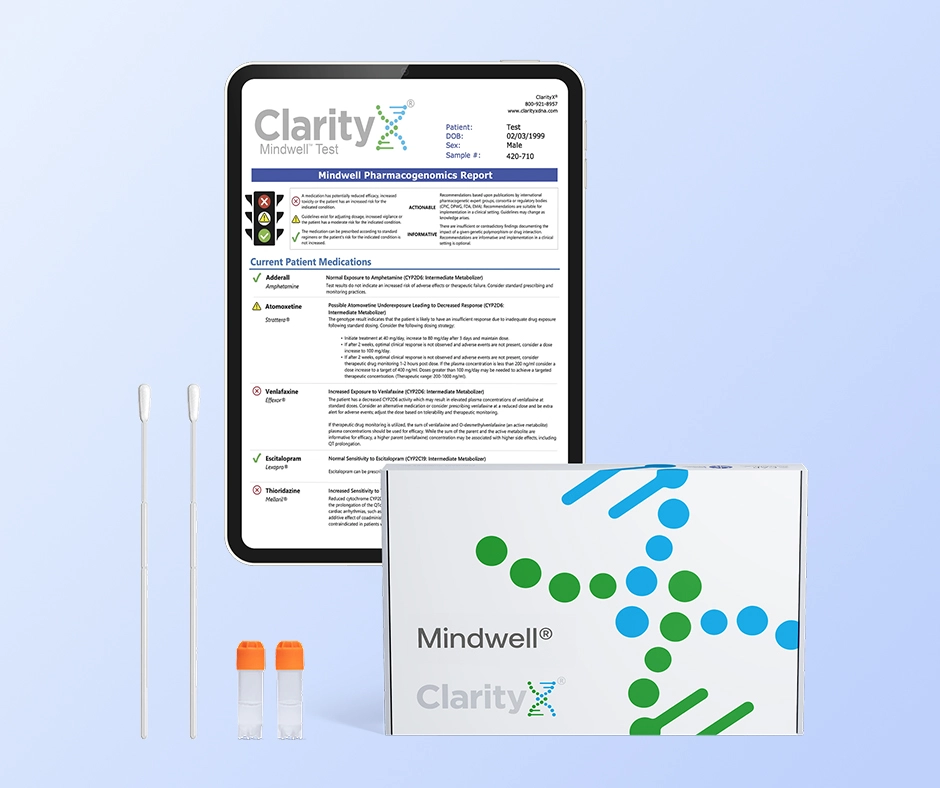Modafinil® and Adderall® are two commonly prescribed medications that are often used for different purposes. Both drugs have stimulant effects on the central nervous system, but they work in different ways and have distinct uses.
This blog will provide a comprehensive comparison of Modafinil and Adderall, including their mechanisms of action, medical applications, side effects, and potential interactions with other drugs. By understanding the similarities and differences between these medications, you can make an informed decision with the help of your healthcare provider about which one may be better suited for your individual needs. Let's delve into the fascinating world of Modafinil and Adderall to uncover what sets them apart and how they can be beneficial for various medical conditions.
Key Takeaways
- Both modafinil and Adderall are considered central nervous system (CNS) stimulants.
- The medications work differently in the body, leading to differences in clinical effects, side effects, and abuse potential.
- Both medications are controlled substances, although Adderall is a more heavily controlled Schedule II substance.
- Modafinil is more established for the management of sleep disorders causing daytime sleepiness, like narcolepsy, shift-work disorder, or obstructive sleep apnea. It may sometimes be recommended for ADHD symptom management.
- Adderall is more established for the management of ADHD. It may be considered for daytime sleepiness, although it’s often reserved for individuals whose therapy with medications like modafinil was unsuccessful.
- Adderall has been studied for ADHD management in pediatric patients, while modafinil has only been studied in adults. For this reason, modafinil is only recommended for individuals over the age of 18.
- Side effects are largely similar, like difficulty falling asleep, jitteriness, and new or worsening anxiety. In general, modafinil may be less likely to cause some of these effects, but individual responses can vary.
Understanding Modafinil and Its Uses
Modafinil, often known by its brand name Provigil, is a medication that is primarily used to treat sleep-related disorders such as narcolepsy, obstructive sleep apnea, and shift work disorder (SWD). It is also prescribed off-label for conditions such as attention deficit hyperactivity disorder (ADHD) and excessive daytime sleepiness. Modafinil is classified as a controlled substance, specifically a schedule IV drug, due to its potential for abuse or dependence. Let's explore the science behind modafinil and its clinical applications in more detail.
The Science Behind Modafinil
Modafinil acts on the central nervous system, influencing the levels of certain neurotransmitters in the brain, including dopamine. The exact mechanism of modafinil is not fully understood, but it is believed to work by increasing the release of dopamine and inhibiting its reuptake, leading to heightened wakefulness and cognitive function.
Modafinil's effects on sleep-related disorders like narcolepsy, obstructive sleep apnea, and shift work sleep disorder are notable. Narcolepsy is a neurological disorder characterized by excessive sleepiness, sleep attacks, and disturbances in sleeping patterns. On the other hand, obstructive sleep apnea involves the recurrent partial or complete blockage of the upper airway during sleep, leading to disrupted breathing. This causes poor sleep and daytime sleepiness. Shift work sleep disorder affects people who work non-traditional hours, causing difficulty sleeping during the day and staying awake at night.
By targeting excessive daytime sleepiness, modafinil helps individuals with sleep-related disorders stay awake and alert, promoting a more normal sleep-wake cycle. Its effects on cognitive function, such as attention, memory, and decision-making, have also been studied, suggesting potential enhancements in these areas. However, further research is needed to fully understand the exact mechanisms of modafinil's effects on the brain.
Clinical Applications of Modafinil
The U.S. Food and Drug Administration (FDA) has approved modafinil for the treatment of narcolepsy, a chronic sleep disorder characterized by excessive sleepiness, sleep attacks, and disturbed sleep patterns. By helping to regulate sleep-wake cycles, modafinil can provide relief from excessive sleepiness, allowing individuals with narcolepsy to lead more normal lives.
Additionally, modafinil has been considered a potential treatment option for improving alertness and cognitive function in individuals with Parkinson's Disease and Multiple Sclerosis, making it a versatile medication for various clinical applications.
Modafinil is commonly prescribed off-label for shift work sleep disorder, a condition affecting individuals who work non-traditional hours, such as night shifts or rotating shifts. Shift work sleep disorder can disrupt the sleep-wake cycle, leading to excessive sleepiness and difficulty staying awake during work hours. Modafinil can help promote wakefulness during these times, allowing shift workers to remain alert and focused.
Another potential application of modafinil is in the treatment of obstructive sleep apnea, a condition characterized by repeated interruptions in breathing during sleep. This interruption of breathing can lead to frequent awakening during the night, along with daytime sleepiness and fatigue. Modafinil, when used with other obstructive sleep apnea treatments, may help manage excessive sleepiness and enhance alertness.
In addition to sleep-related disorders, modafinil has shown potential efficacy in treating symptoms of attention deficit hyperactivity disorder (ADHD). ADHD is a neurodevelopmental disorder characterized by symptoms such as inattention, hyperactivity, and impulsivity. Studies have indicated that modafinil may improve symptoms of ADHD, including cognitive function and attention.
As modafinil is a prescription medication, it is essential to consult with a healthcare provider to determine its appropriate use and dosage for specific medical conditions. Regular monitoring is recommended to assess effectiveness, adjust dosage, and address potential side effects. It's important to remember that modafinil should only be taken under the guidance of a healthcare professional.
Comprehending Adderall and Its Uses
Adderall is another prescription medication widely used for different purposes, most notably in the treatment of attention deficit hyperactivity disorder (ADHD). Adderall XR, the extended-release formulation, is commonly prescribed for ADHD symptoms, including inattention, hyperactivity, and impulsivity.
It is classified as a controlled substance, specifically a Schedule II drug, due to its high potential for misuse. Like any controlled substance, it should only be taken if prescribed by a healthcare provider to avoid negative side effects. Adderall can have stimulant effects on the central nervous system, leading to improved focus, attention, and overall hyperactivity control. Let's explore how Adderall works and its therapeutic uses in more detail.
The Mechanism of Adderall
Adderall contains amphetamine salts that work by increasing the levels of certain neurotransmitters, including dopamine and norepinephrine, in the central nervous system. These increased neurotransmitter levels contribute to Adderall's stimulant effects, which can help individuals with ADHD better control their symptoms, such as excessive activity, impulsivity, and lack of focus.
By targeting specific areas of the brain, Adderall helps regulate impulses and hyperactivity, allowing individuals with ADHD to enhance their attention span and improve their overall executive function. The exact mechanism of action of Adderall is complex and not fully understood, but it is believed to involve the direct stimulation of certain receptors in the brain, resulting in increased neurotransmission.
Therapeutic Uses of Adderall
Adderall is most commonly prescribed for the treatment of attention deficit hyperactivity disorder (ADHD), a condition characterized by symptoms of inattention, hyperactivity, and impulsivity. When used as directed, Adderall can help individuals with ADHD improve focus, attention, and control over their impulsive behaviors. It is available in different formulations, including immediate-release and extended-release options, with Adderall XR being the most commonly prescribed for long-lasting effects throughout the day.
In addition to ADHD, Adderall may also be occasionally prescribed for narcolepsy, a sleep disorder characterized by excessive daytime sleepiness, sleep attacks, and disturbed sleep patterns. By promoting wakefulness, Adderall can help individuals with narcolepsy stay awake and alert during the daytime, allowing for improved functioning and productivity. Adderall is generally reserved as second-line therapy if treatment with medications like modafinil has been ineffective.
It's crucial to consult with a healthcare provider before starting Adderall, especially in the case of ADHD or other medical conditions, to ensure an accurate diagnosis, appropriate treatment, and adequate monitoring of potential side effects or complications. Adderall should only be used under the guidance of a healthcare professional.
Comparing Modafinil and Adderall: How Do They Work?
How do Modafinil and Adderall work differently in the body? Let’s explore the science behind them to make an informed choice.
Action Mechanism of Modafinil vs Adderall
When comparing the action mechanisms of Modafinil and Adderall, it's crucial to note their distinct approaches. Modafinil works by adjusting neurotransmitters to enhance wakefulness, emphasizing alertness while minimizing jittery side effects. In contrast, Adderall boosts dopamine and norepinephrine levels, offering immediate stimulation but carrying a higher dependency risk.
Healthcare providers assess individual reactions for tailored prescriptions. However, it is important to note that some people may experience withdrawal effects, such as reduced energy, lack of motivation, and depression, following the discontinuation of modafinil. These differences showcase the nuanced ways these medications influence the body's functions and highlight the importance of personalized treatment approaches.
Effectiveness of Modafinil and Adderall
When considering the effectiveness of Modafinil and Adderall, it's essential to note that Modafinil is often favored for long-term wakefulness requirements, while Adderall is commonly prescribed for immediate relief of symptoms. The impact of these medications can vary from person to person, leading healthcare providers to customize treatment approaches based on individual responses. Each medication offers distinct advantages and potential side effects, highlighting the importance of personalized care tailored to specific needs and conditions.
Modafinil vs Adderall: Analyzing the Key Differences
When comparing Modafinil and Adderall, it's essential to understand the significant differences between these two medications. While Modafinil is classified as a Schedule IV controlled substance in the United States, Adderall falls under Schedule II due to its potential for higher abuse and dependence.
Additionally, Modafinil is primarily used to treat narcolepsy and sleep disorders like obstructive sleep apnea, whereas Adderall is commonly prescribed for attention deficit hyperactivity disorder (ADHD) and narcolepsy. Understanding these key distinctions can help individuals make informed decisions about suitable medication options based on their medical needs and history.
Differences in Composition and Effects
When comparing Modafinil and Adderall, it's essential to note the differences in their composition and effects. Understanding how these medications vary in their chemical makeup provides insights into the unique effects they offer. The contrasting ways Modafinil and Adderall affect the body stem from their distinct chemical structures. Exploring these differences in composition and their different effects can shed light on the varied impacts each medication has on users.
Variations in Dosage and Strength
When considering Modafinil and Adderall, it is crucial to explore the diverse dosages and strengths available for both medications. If switching from one medication to another, no established guidelines exist for matching therapeutic strengths. Each medication should be started at a low dose and increased slowly over time while monitoring efficacy and potential side effects.
In general, Adderall could be considered a more “potent” medication. Symptoms that may not have been relieved by modafinil may be relieved by Adderall in some circumstances, but side effects may also be more prominent, along with a higher potential for abuse. Ultimately, it’s best to review your individual needs with your provider to establish safe, targeted therapy.
Exploring the Similarities Between Modafinil and Adderall
Both Modafinil and Adderall are used to treat conditions such as attention deficit hyperactivity disorder (ADHD) and narcolepsy. They are classified as controlled substances due to their stimulant effects, with Adderall falling under Schedule II and Modafinil under Schedule IV by the Drug Enforcement Agency (DEA).
Common side effects include trouble sleeping, loss of appetite, and high blood pressure. Additionally, both medications can interact with other drugs, so it's crucial to consider one's medical history and existing treatment options to avoid potential adverse effects.
Shared Medical Uses
When considering medical uses, both Modafinil and Adderall offer treatment for various conditions, including attention deficit hyperactivity disorder and excessive daytime sleepiness. Additionally, these medications play a crucial role in managing sleep disorders like obstructive sleep apnea and shift work sleep disorder, providing relief for individuals facing these challenges.
Modafinil is often considered a first-line therapy for managing excessive daytime sleepiness. Adderall is generally more established for the management of ADHD and often acts as a second-line option for managing sleep disorders.
Common Side Effects
Both medications are central nervous system stimulants, and it’s important to monitor for symptoms like chest pain and increases in blood pressure. In rare cases, they can be associated with hallucinations, seizures, and dangerous heart arrhythmias. Let’s look at the potential side effects of each medication in more detail.
Addressing the Risks: Side Effects and Warnings
It is important to note that there have been cases of Provigil and Adderall abuse, which has been primarily studied in college students. These students may take the drugs, sometimes over the recommended dosages, to increase wakefulness for the purposes of studying and longer hours of productivity. Moreover, common side effects such as dry mouth and high blood pressure may occur.
Potential Adverse Effects of Modafinil
The most common side effects of modafinil include:
- Headaches.
- Nausea.
- Feeling nervous.
- Stuffy or runny nose.
- Diarrhea.
- Back pain.
- Anxiety.
- Difficulty sleeping.
- Dizziness.
- Indigestion.
Modafinil has not been studied in individuals under 18 and is not recommended for this age group. If any of these side effects bother you or persist, it's essential to talk to your healthcare provider.
Potential Adverse Effects of Adderall
Adderall has been studied in a wider range of ages, and the side effects experienced by different age groups are potentially different.
In children aged 6 to 12 years:
- Loss of appetite.
- Difficulty sleeping.
- Stomach pain.
- Mood swings.
- Vomiting.
- Feeling nervous or jittery.
- Nausea.
- Fever.
For adolescents aged 13 to 17 years:
- Loss of appetite.
- Difficulty sleeping.
- Stomach pain.
- Unintentional weight loss.
- Feeling nervous or jittery.
- Dry mouth.
- Loss of appetite.
- Difficulty sleeping.
- Headache.
- Weight loss.
- Nausea.
- Anxiety.
- Restlessness.
- Dizziness.
- Fast heartbeat.
- Diarrhea.
- Weakness.
Particularly for pediatric patients, it’s critical to ensure growth parameters (e.g., height and weight) remain in healthy ranges. If Adderall seems to be affecting growth, your healthcare provider may recommend stopping the medication.
The potency of Adderall can lend itself to potentially higher rates of jitteriness, anxiety, and difficulty falling asleep, but the medications have not been studied head-to-head when evaluating safety. Individual responses may vary.
Understanding Drug Interactions: Modafinil and Adderall
Understanding how modafinil and Adderall interact with other drugs is crucial. Always consult healthcare professionals before making any changes to medication regimens to avoid complications. Talk with your providers about all of the prescription and over-the-counter products you use.
Interactions of Modafinil with Other Drugs
Modafinil can make contraceptives less effective. Alternative or additional methods of contraception are recommended up to a month after discontinuing modafinil.
Modafinil can affect the way other medications are processed in the body. Levels of medications that are processed by CYP2C19 (like omeprazole, phenytoin, or diazepam) enzymes can build up and be more likely to cause side effects.
Interactions of Adderall with Other Drugs
The absorption and elimination of Adderall can be impacted by medications that increase or decrease pH levels in the stomach and the urine. For instance, taking antacids can increase concentrations of Adderall in the blood. Make sure you include over-the-counter products when discussing the other medications you use and how they may affect Adderall.
The Final Verdict: Modafinil vs Adderall
When considering Modafinil vs Adderall, it's essential to note that both are medications prescribed for narcolepsy and ADHD treatment. While Modafinil is often viewed as a gentler option with fewer side effects and lower abuse potential, Adderall, a stimulant, may be more effective for managing ADHD symptoms at the cost of higher risks, including abuse potential. The decision between the two hinges on individual needs and consultation with a healthcare provider for personalized guidance.
Factors to Consider Before Choosing Modafinil or Adderall
Aside from the differences in uses and side effects, it’s important to consider that modafinil has not been studied in individuals under the age of 18. Additionally, comparing the costs of Modafinil and Adderall can help determine the more affordable option.
Is Modafinil or Adderall Better for You?
Choosing between Modafinil and Adderall depends on individual needs. Modafinil promotes wakefulness for narcolepsy, while Adderall treats ADHD. Modafinil typically has fewer side effects than Adderall. Consult a healthcare provider to determine the best fit for your situation.
Conclusion
In conclusion, the choice between Modafinil and Adderall depends on individual needs and considerations. Understanding their mechanisms, effects, and potential risks is crucial in making an informed decision. While both drugs have similarities in medical uses and side effects, differences in composition, dosage, and strength exist.
It's essential to weigh the benefits and risks, consult with a healthcare professional, and consider potential drug interactions before selecting the most suitable option for your specific situation. Make an informed choice for your well-being based on thorough research and expert advice.
References:
https://pubmed.ncbi.nlm.nih.gov/22694135/
https://www.dea.gov/factsheets/amphetamines
https://www.dea.gov/drug-information/drug-scheduling
https://www.psychiatry.org/patients-families/adhd/what-is-adhd
https://jamanetwork.com/journals/jama/fullarticle/183580
https://medlineplus.gov/druginfo/meds/a602016.html
https://medlineplus.gov/druginfo/meds/a601234.html
https://www.ncbi.nlm.nih.gov/pmc/articles/PMC5344488/
https://jcsm.aasm.org/doi/10.5664/jcsm.9328
https://www.sciencedirect.com/science/article/abs/pii/S0022395616301777?via%3Dihub
https://www.ncbi.nlm.nih.gov/pmc/articles/PMC4252229/





